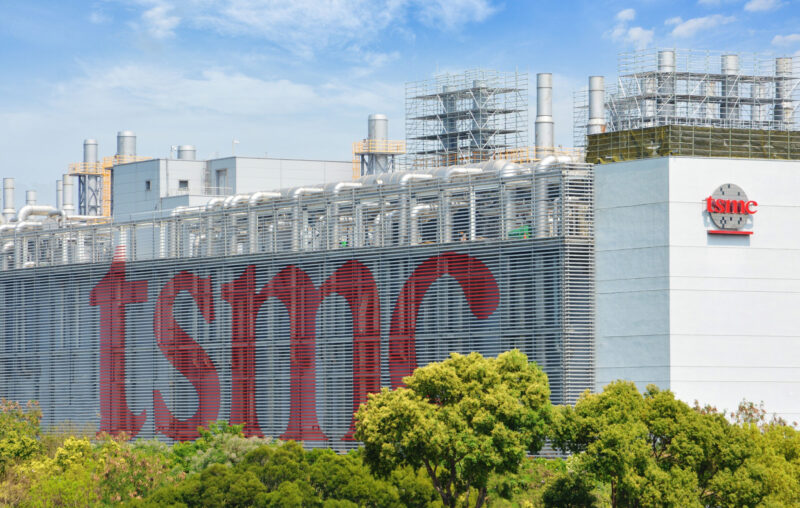What the US Can Learn From Taiwan’s Success in Chip Manufacturing

Following the recent US-imposed microchip bans on China, the Biden Administration launched the CHIPS for America Funding Opportunity. The administration aims to revitalize the domestic semiconductor industry and restore US leadership in chip manufacturing. Like many of the administration’s recent actions, the Act is a form of industrial policy whereby the government imposes regulations or subsidies to shore up specific industries.
Why is the US pursuing industrial policy, even after we’ve seen it fail countless times in Argentina, India, China, and South Korea? The only place where government support for the chip industry has not proven detrimental is Taiwan, the model for the advocates of industrial policy. The role of industrial policy in Taiwan, however, is often misunderstood. Taiwan’s ability to create cutting-edge chips resulted from unimpeded entrepreneurship, not industrial policy. Unfortunately, the US is moving backward, pursuing the reverse of what made the Taiwanese successful.
Taiwan’s semiconductor industry did not spontaneously emerge. The state engineered it through industrial policy during the 1960s to create jobs, acquire advanced technology, and strengthen security relationships with the US. Initially, those in the private sector were reluctant to invest in semiconductors because of how capital-intensive the industry is. As a result, the state acted as a venture capitalist and invested on behalf of the private sector. The government provided research and development (R&D) funding, public infrastructure, tax incentives, and subsidies, to create a favorable environment for businesses to flourish. Generous state support kickstarted the semiconductor industry and facilitated the recruitment of highly skilled and educated workers.
Once semiconductors gained traction in the private sector, though, the state embraced its changing role and reduced its support. By the 1990s, private investments surpassed public funding, with the government share of total semiconductor R&D expenditure falling from 44 percent to 6.5 percent between 1990 and 1999. Firms relied less on the state and eventually became profitable enough to support their capital costs and investments. The Taiwanese Semiconductor Manufacturing Company’s (TSMC) success demonstrates this diffusion from the state to the private sector, with the government’s share decreasing from 48 percent at its establishment in 1987 to approximately 6.4 percent from 2005 onwards. Over time, decreasing the government’s stake ensured TSMC would not become reliant on industrial policy and remained competitive in the market.
Despite TSMC being Taiwan’s leading chip firm, the government did not grant them preferential treatment, and allowed market mechanisms to drive business decision-making. In 1990, the state did not provide aid to TSMC or UMC (United Microelectronics Corporations) when both firms faced financial hardship, forcing them to adjust their business strategies to remain competitive. Adopting the ‘no safety net’ approach meant that firms had to respond to market signals and bear the costs of their own decisions. This fostered an entrepreneurial environment that prioritized meeting consumer demands, not political goals.
Specialization and free trade also played an important role in the success of Taiwan’s semiconductors. While the semiconductor production process is complex, it is comprised of three main steps: chip design, manufacturing, and ATP – assembly, test, and packaging. With the help of the Taiwanese government, TSMC was built as a ‘pure-play foundry’ that specialized in chip manufacturing, integrating deeply with foreign countries like the US that specialized in chip design. Specialization allowed TSMC to collaborate with industry leaders while establishing Taiwan’s unique competitive advantage in chip manufacturing. While the government provided industry support, it trusted the expertise and knowledge of firms to understand what the market demanded.
It is a mistake to believe that industrial policy drove Taiwan’s semiconductor success. The reality is that Taiwan merely used industrial policy to overcome the high technological and financial entry barriers during the early stages of the industry’s development. Once these barriers were cleared, the Taiwanese state embraced its changing role by prioritizing market mechanisms over centralized control. Ultimately, Taiwan’s strong industry performance resulted not from strategic state planning, but from unimpeded entrepreneurship and limited government intervention.
If the US government wants to fulfill the vision set out in the CHIPS Act, it should be wary of industrial policy. Taiwan’s semiconductor companies succeeded not because of grants and subsidies, but from their ability to innovate and respond to the pressures of a competitive market.










